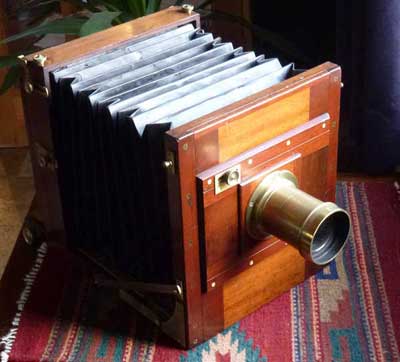About this website
| Background | Navigation | Collections | Photography | Acknowledgements | Authors |
|---|
PhotographyThe photographs shown in this catalogue were made over a number of years under varying circumstances. Some were made in museum conditions, others in the field using available natural light and some in basements by the light of a single incandescent 40 watt light bulb. They are not all to conventional publication quality, but serve as a working record of collections. Specimens were cleaned where necessary before being photographed using low angle unidirectional illumination. In most cases Ilford FP4 black and white 35 mm negative film was used with a Nikon 35 mm camera equiped with a macro lens. Some images were made using Russian film stock. To enhance contrast some specimens were illuminated with plane polarised light and photographed with a camera fitted with a polarising filter. The filter was rotated to obtain the desired degree of contrast. Negatives were scanned using an Epson V700 Photo flatbed scanner at 2400 dpi resolution and a 16 bit grayscale. Alaskan collections dating from the 1970s were photographed using a Polaroid 5 x 4 inch negative camera, again with low angle illumination. Photographs of thin sections were made with a Wild binocular microscope and a Nikon 35 mm camera and Ilford FP4 film or a digital back. |
 |
Line DrawingsFor most line drawings prints were made on Agfa-Gevaert Rapidoprint paper at x2 enlargement and left unglazed. After drying, line drawings were made of the margin and venation directly on the photographic prints using waterproof ink. Where parts of the specimens were missing or obscured, dotted lines were used to outline the portion of the lamina unavailable for study. No reconstruction of architecture or form was attempted and details were checked with the actual specimens. When the ink was dry the prints were briefly washed in water (30 seconds) before being bleached using a solution of 0.4% iodine and 1.5% potassium iodide by weight, in water. After a few minutes the silver image was completely removed leaving a line drawing on paper stained yellow-brown. Fixing in an ordinary fix bath (sodium thiosulfate) cleared the staining and the print was then washed and glazed. Occasionally light-yellow staining persisted where the original image had been most dense. This proved to be of no consequence when the drawings were re-photographed on 35 mm lithofilm and the negatives scanned as above. A similar process is referred to in Dilcher (1974). Where the preservation of a specimen was such that fine details of the venation were present, camera-lucida drawings were made at an enlarged scale directly from the specimen. Line drawings of some specimens were made using a Wacom digitizing tablet directly fom the digitized photographs.
Cuticular DetailsAll the fossil material featured on this website lacked cuticle. This suggests the original cuticle was probably thin and this would be expected in a generally wet climate. Epidermal features are sometimes preserved in fossil specimens devoid of cuticle when the impression matrix is fine-grained or a mineral precipitate is formed on the surface of the plant material soon after entry into an aqueous environment (Chaloner and Collinson, 1975; Spicer, 1977). To determine if epidermal features were preserved in the Alaskan material, silicone rubber impressions were made of selected specimens (Watson and Alvin, 1976) and examined by scanning electron microscopy. All specimens exhibited a blistered or pustulate surface and no epidermal features were seen. |
